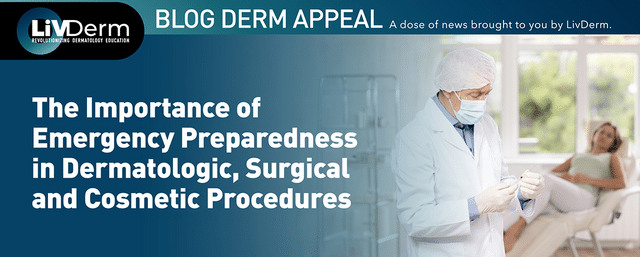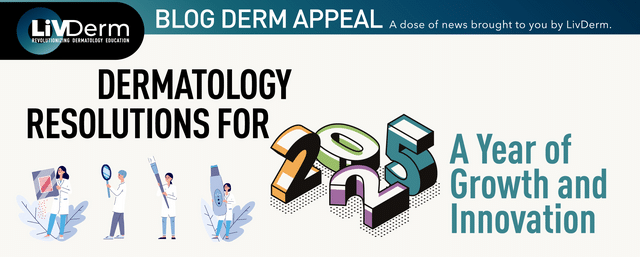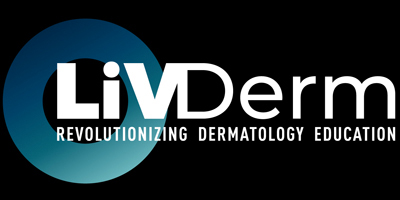Medical procedures are inherently unpredictable, meaning that even in the most controlled environments, unexpected complications can arise at any time. This unpredictability makes emergency preparedness not just advisable but absolutely non-negotiable. Patient safety is paramount, and having the appropriate measures in place to respond promptly to emergencies is a crucial aspect of any medical procedure. The ability to act swiftly and effectively can mean the difference between a successful outcome and a potentially life-threatening situation.
Study Background and Methods
In a recent study published in the Journal of Cosmetic Dermatology, researchers investigated the frequency of emergency complications during dermatological, surgical, or cosmetic procedures. Their aim was to not only assess the occurrence of these complications but also examine the level of preparedness and knowledge in handling these emergency situations. This post highlights their findings and emphasizes the critical importance of possessing the necessary expertise and having the appropriate measures in place to effectively manage these emergencies.
The study was conducted between December 1, 2022, and January 31, 2023, and consisted of a web-based, 33-item questionnaire in Google Forms. This was sent to dermatologists via email and through social media.
The questionnaire encompassed four parts; the first captured the sociodemographic and occupational characteristics of the dermatologists, the second looked to find out which dermatological, surgical, and cosmetic procedures they performed and the frequency of these, the third asked whether or not they experienced emergency complications during these procedures, and the last part asked about the dermatologists’ level of knowledge regarding emergency complications and basic life support. It is to be noted that emergency complications were classified as vasovagal syncope, seizure, anaphylaxis, hyperventilation syndrome, hypotension/bleeding, and cardiac arrest.
Study Findings
A total of 240 dermatologists participated in the study with most (81%) being female. The majority of the dermatologists (54%) were specialists in their field. A total of 23% were residents, 9% were assistant professors, 7% associate professors, and 7% professors.
Dermatological/Surgical Procedures
For most of the participants (49%), the average number of dermatological/surgical procedures conducted per week was between 10 and 50. Only 8% reported conducting over 100 procedures per week, 15% reported between 50 and 100 per week, and 28% reported less than 10 procedures per week. The procedures included cryotherapy, biopsy, excision, electrocauterization, intralesional injection, nail surgery, and skin grafting.
Emergency complications during dermatological/surgical procedures were reported by 151 (63%) of participants, with the most commonly reported complications being vasovagal syncope (58%), hypotension/bleeding (28%), and seizure (10%). Emergency complications were found to be most common during biopsies (34%), intralesional injection (27%), cryotherapy (12%), and excision (12%).
Cosmetic Procedures
In looking at cosmetic procedures conducted per week, a total of 51.5% of participants reported less than 10 cosmetic procedures, with 36.6% stating they conducted between 10 and 50 cosmetic procedures per week. Only 3.7% conducted over 100 cosmetic procedures per week, and 8.2% between 50 and 100 per week. Cosmetic procedures included botulinum toxin, platelet-rich plasma, mesotherapy, micro-needling, dermal filler, chemical peeling, thread, laser, radiofrequency, stem-cell therapy, and hair transplantation.
A total of 84 (43.2%) of participants who performed cosmetic procedures reported emergency complications, with vasovagal syncope being the most common at 38.6%. Hypotension/bleeding was the second most common at 13.9%, and seizure was the third at 5.6%. The majority of the emergency complications occurred during dermal filler procedures (23.7%), botulinum toxin (17%), and mesotherapy (15.9%).
Basic Life Support Training
One of the questions included on the questionnaire was whether or not participants had previously undergone basic life support training. A total of 101 (42%) had both theoretical and practical training. Only 74 (31%) reported having had theoretical training, and 65 (27%) reported having had no training.
Participants were also asked to evaluate their knowledge/skill level regarding emergency complications. A total of 3% described their knowledge/skill level as very good, 18% as good, 47% as fair, 30% as poor, and 2% as very poor.
The question asking whether or not they would like to have training programs on emergency complications and basic life support revealed that 227 (95%) would like this option.
Emergency Complications and Sociodemographic and Occupational Characteristics
The study further evaluated the relationship between emergency complications and the dermatologists’ sociodemographic and occupational characteristics. Results demonstrated that “emergency complications were significantly more common among specialists, those with more than 15 years of professional experience, those working in their private clinics, those with an average of 10–50 dermatological/surgical procedures per week, and those with an average of fewer than 10 cosmetic procedures per week.”
Discussion
This study found that a higher percentage of participants reported emergency complications during dermatological and surgical procedures than in cosmetic procedures, (53% compared to 43.2%). This disparity may, however, be attributed to several factors, including patient motivation and health status. Cosmetic patients, for instance, may be less prone to complications as they are generally healthier and more focused on aesthetic outcomes. Dermatological and surgical patients, however, may have underlying medical conditions that increase the risk of complications.
The study’s findings indicate that a relatively high frequency of dermatologists who experienced emergency complications during dermatological, surgical, or cosmetic procedures. It is important to note that the common complications are mild, self-limiting and not life-threatening, indicating that they can typically be performed safely in an outpatient setting. That said, there is a critical need for dermatologists to maintain a high level of competence and emergency preparedness for potential emergencies across all types of procedures, ensuring patient safety and optimal outcomes.
Emergency Preparedness
Knowledge and Training
The foundation of emergency preparedness in medical settings is knowledge and training of all involved, from practitioners to support staff. It is vital to ensure that everyone is well-versed in recognizing and responding to potential emergencies. The study highlights the importance of ongoing education that encompasses both theoretical and practical training programs, with a focus on basic life support and emergency management. Furthermore, training should encompass a diverse range of scenarios specific to dermatologic, surgical, and cosmetic procedures, such as allergic reactions, vasovagal syncope, and more severe events like anaphylaxis or cardiac emergencies. A continuous learning approach is essential to maintain the skills and readiness of everyone involved.
Equipment and Supplies
Maintaining up-to-date emergency kits is another crucial component to preparedness for any arising complication. Not only do these need to be regularly inspected and restocked, but it is important that all staff members be familiar with the location and contents of these kits and how to use them if needed.
Established Protocols and Procedures
Having clear and established protocols and procedures in place is important to preparing for any emergency situation. These should map out any steps to follow in an emergency and should be regularly reviewed and updated.
Team Coordination and Communication
For emergency response efforts to be effective and efficient, it is crucial that everyone works together and knows their role during an emergency. This requires clear communication among all staff and seamless collaboration between team members. By prioritizing team coordination and communication, medical and aesthetic settings can significantly enhance their emergency readiness capabilities.
Concluding Thoughts
As this study has shown, the importance of emergency preparedness in dermatologic, surgical, and cosmetic procedures cannot be overstated. Findings reveal that although many complications are mild and self-limiting, they occur more frequently than expected, making effective and proactive preparedness essential. By prioritizing ongoing knowledge and training, ensuring the readiness of equipment and supplies, establishing clear protocols and procedures, and fostering effective team coordination, complications can be managed and mitigated to ensure patient safety.
If you’re interested in enhancing your skills and staying informed on the latest developments, consider joining us for our 23rd annual South Beach Symposium (SBS) this February 6-8 in Miami Beach. This prestigious event offers a comprehensive program covering the latest advancements in both medical and aesthetic dermatology, led by the foremost experts in the field. By prioritizing education and staying informed, practitioners can ensure they are always prepared to handle any situation that may arise. Register now to join us in South Beach for SBS 2025.
Source:
- Erdogan, H. K., Tekin, M. S., Agaoglu, E., Bas, S. S., Acer, E., Saracoglu, Z. N., & Bilgin, M. (2024). Emergency complications during dermatological, surgical, or cosmetic procedures: A cross‐sectional study among dermatologists. Journal of Cosmetic Dermatology. https://doi.org/10.1111/jocd.16479


















